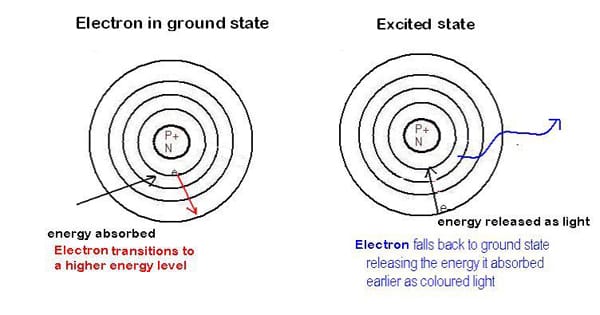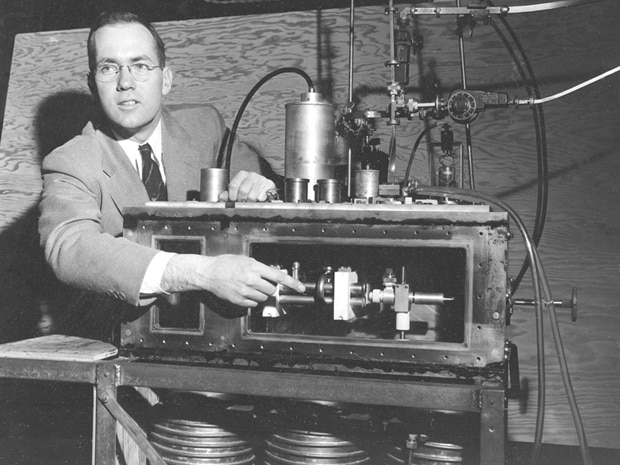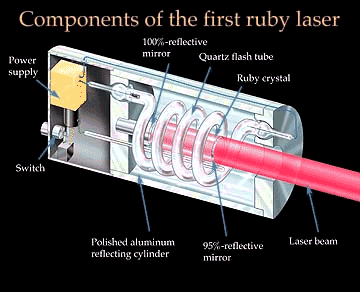The laser is a device that generates a beam of light. The beam is produced by a process known as stimulated emission, and the word “laser” is an acronym for the phrase “light amplification by stimulated emission of radiation.”
Similar to radio waves, light can also carry information. The information is encoded in the beam as variations in the frequency (or shape) of the light wave. Since light waves have much higher frequencies they can also hold much more information.
Lasers consist of several components. A few of the many things that the so-called active medium. This might consist of: atoms of a gas, molecules of a liquid, and ions in a crystal. The Power Supply will introduce energy into the active medium, such as a flash lamp for example. Another component is the pair of mirrors on either side of the active medium which consists of one that transmits the radiation that hits it. Within the active component in the laser exist atoms at varying energy states or levels.
An example of the energy states could be pictured as an unevenly spaced ladder in which the higher rungs mean a higher “excited” state of energy and the lower rungs mean lower “ground” states of energy. An atom will reach its ground state or lowest state of energy if left undisturbed. According to quantum mechanics, there is only one light frequency that the atom will work with.
There are three ways that the atom can deal with the presence of light energy: either it can absorb the light, or spontaneous emission occurs, or stimulated emission occurs. This means that if the atom is at its lowest state that it may absorb the light and jump to its higher state and emit extra light while doing so.
The second thing it may do is if it is at its highest state it can fall spontaneously to its lower state thus emitting light. Spontaneous emission is not affected by light yet it is rather on a time scale characteristic of the states involved. That is called the spontaneous lifetime. In stimulated emission, the frequency of the light is the same as the frequency of the light that stimulated it.

Carbon-monoxide, color center, excimer, free-electron, gas-dynamic, helium-cadmium, hydrogen-fluoride, deuterium-fluoride, iodine, Raman spin-flip, and rare-gas halide lasers are just a few of the many types of lasers there are out there in the world. The helium-neon laser is the most common and by far the cheapest costing about $170. The diode laser is the smallest being packed in a transistor-like package. The dye lasers are very useful for their broad, continuously variable wavelength capabilities.
The theory of stimulated emission was first proved by Albert Einstein in 1916, and then population inverse was discussed by V.  A. Fabrikant in 1940. This led to the building of the first ammonia maser (microwave amplification by stimulated emission of radiation) in 1954 by J. P. Gordon, H. J. Zeiger, and Charles H. Townes.
A. Fabrikant in 1940. This led to the building of the first ammonia maser (microwave amplification by stimulated emission of radiation) in 1954 by J. P. Gordon, H. J. Zeiger, and Charles H. Townes.
In July of 1960, Theodore H. Maiman announced the generation of a pulse of coherent red light by means of a red crystal; thus the first laser was born. In 1987 Gordon Gould won a patent he had been trying to get for three years to build the first gas-discharged laser which he had conceived in 1957. In that same patent, the helium-neon was also included.
Bibliography:
- Bertolotti, M., Masers, and lasers: An Historical Approach (1983);
- Kasuya, T., and Tsukakoshi, M., Handbook of Laser Science and Technology
- (1988); Meyers, Robert, ed., Encyclopedia of Lasers, 3d ed. (1989); Steen, W. M., ed., Lasers in Manufacturing (1989); Whimmery, J. R., ed., Lasers: Invention to Application (1987); Young, M., Optics and Lasers, 3d rev. ed. (1986).

